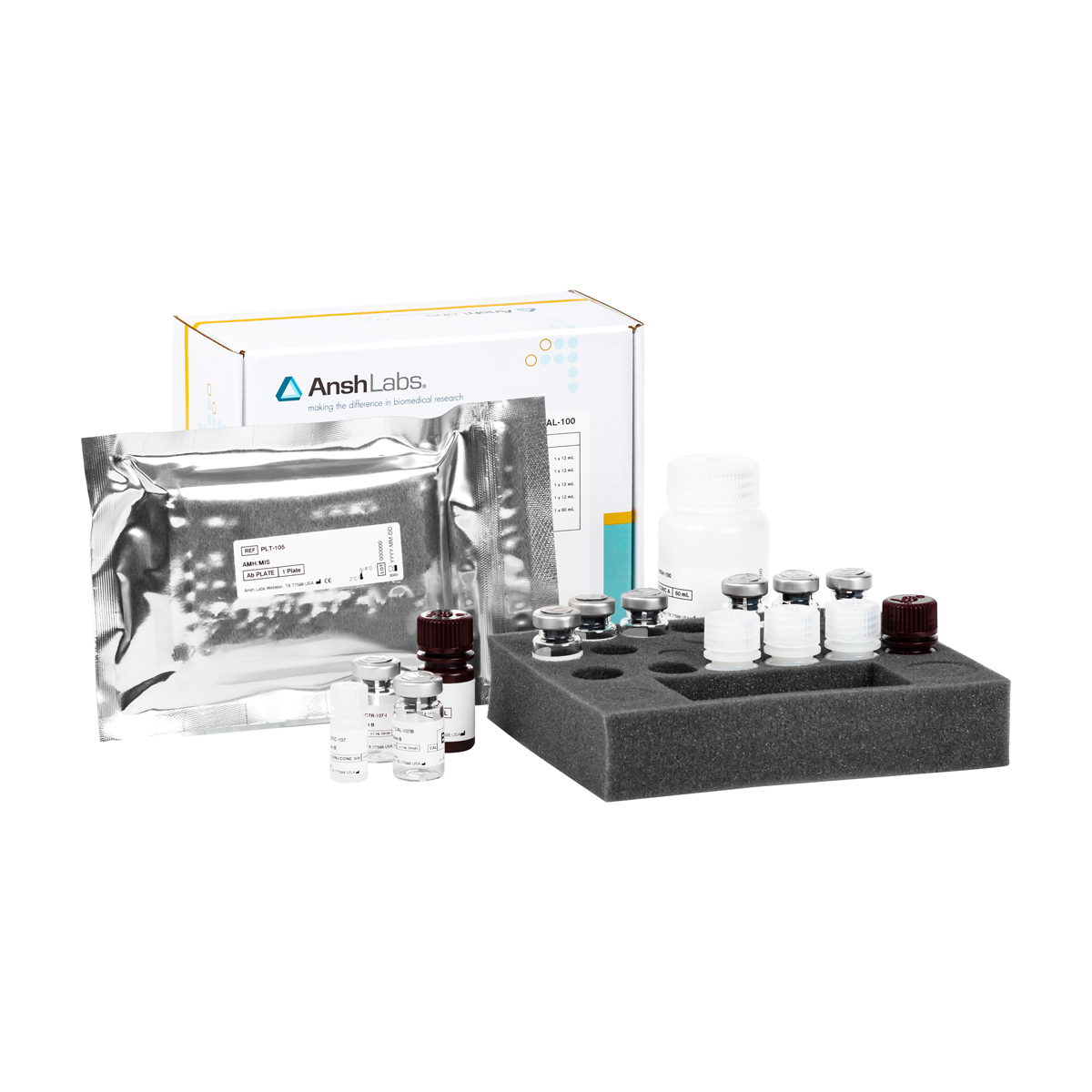The Total GIP enzyme linked immunosorbent assay (ELISA) kit provides materials for the quantitative measurement of GIP (1-42aa, 3-42aa and 1-30aa) in human serum, plasma, and other biological fluids. This assay is intended for in vitro research use only.
| Catalog Number | |
|---|---|
| Packaging | 96 well microtiter |
| Detection | HRP-based ELISA, colorimetric detection by dual wavelength absorbance at 450 nm and 630 nm as reference filter |
| Dynamic Range | 6, 62.5-1000 pg/mL |
| Limit of Detection | 8 pg/mL |
| Sample Size | 25 µL |
| Sample Type | Plasma, Serum |
| Assay Time | 3.5 hours |
| Shelf Life | 24 months |
| Species Reactivity | Human, Bovine Serum, Caprine Serum, Equine Serum, Feline Serum, Porcine Serum, Squirrel Monkey Serum |
| Availability | Worldwide |
Glucose-dependent insulinotropic polypeptide (GIP) (also known as gastric inhibitory polypeptide) is an incretin hormone produced in the upper gut and secreted to the circulation in response to the ingestion of foods, especially fatty foods(1). It is a peptide hormone consisting of 42 amino acids and derives from posttranslational processing of pre-pro-GIP, a protein consisting of 153 amino acids. It is structurally similar to members of the secretin/glucagon family that include secretin, glucagon, vasoactive intestinal peptide, and growth hormone-releasing factor(2). Growing evidence supports the physiological and pharmacological relevance of GIP in development of obesity and the pathogenesis of cardiovascular disease in addition to its involvement in type 2 diabetic pathophysiology(1,3). GIP acts in the entero-insular axis as an anabolic hormone that increases insulin levels, which in return increases the glycogen and fatty acid synthesis and inhibits the breakdown of fat. GIP also has extra pancreatic functions as well as roles in the stomach to reduce acid secretion by the parietal cells. On the bone, GIP has a dual effect as it causes proliferation of osteoblasts as well as inhibits osteoclastic bone resorption. The widespread expression of GIP-R in the brain suggests that GIP might play an essential function in neuro-signaling mechanisms(2).
References:
1. Fukuda M. The Role of GIP Receptor in the CNS for the Pathogenesis of Obesity. Diabetes. 2021;70(9):1929-1937. doi:10.2337/dbi21-0001
2. Gupta K, Raja A. Physiology, Gastric Inhibitory Peptide. [Updated 2022 Sep 26]. StatPearls Publishing; 2023 Jan-. Available from: https://www.ncbi.nlm.nih.gov/books/NBK546653/
3. Heimbürger SM, Bergmann NC, Augustin R, Gasbjerg LS, Christensen MB, Knop FK. Glucose-dependent insulinotropic polypeptide (GIP) and cardiovascular disease. Peptides. 2020; 125:170174. doi: https://doi.org/10.1016/j.peptides.2019.170174
GIP (Intact) ELISA AL-1022
Kumar A, Patel AS, Parekh H, Kumar T, Eskandari A, Mistry S, Kalra B. Development of GIP ELISAs: The Next Level of Diabetes Management. Poster presentation at the Association for Diagnostics and Laboratory Medicine; 2024; Chicago, Illinois.
All Products Cited: GIP (Intact) ELISA AL-1022; GIP (Total) ELISA AL-1013
GIP (Total) ELISA AL-1013
Kumar A, Patel AS, Parekh H, Kumar T, Eskandari A, Mistry S, Kalra B. Development of GIP ELISAs: The Next Level of Diabetes Management. Poster presentation at the Association for Diagnostics and Laboratory Medicine; 2024; Chicago, Illinois.
All Products Cited: GIP (Intact) ELISA AL-1022; GIP (Total) ELISA AL-1013
